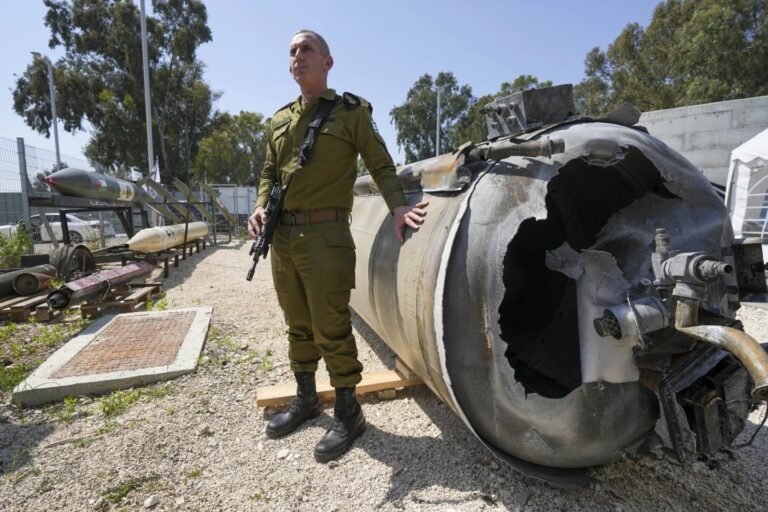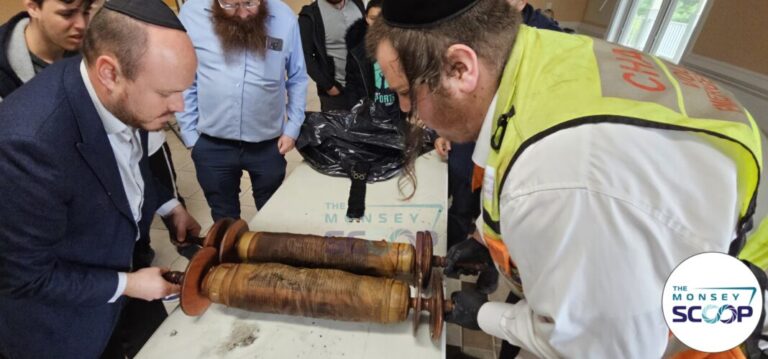 The plane had blown an engine over the northern Arabian Sea, and the lead pilot, Lt. Miroslav “Steven” Zilberman Z”L, had to make lightning-quick decisions.
The plane had blown an engine over the northern Arabian Sea, and the lead pilot, Lt. Miroslav “Steven” Zilberman Z”L, had to make lightning-quick decisions.
The E-2C Hawkeye, returning from a mission in Afghanistan, was a few miles out from the Dwight D. Eisenhower aircraft carrier. Zilberman, 31, was a veteran U.S. Navy pilot who had flown many times in the Middle East with the Hawkeye, a turbo-prop aircraft loaded with radar equipment.
The starboard propeller shut down, causing the plane to become unstable and plunge. Zilberman ordered his three crew mates, including the co-pilot, to bail. He manually held the plane as steady as possible so they could jump.
“He held the plane level for them to do so, despite nearly uncontrollable forces. His three crewmen are alive today because of his actions,” Navy Rear Adm. Philip S. Davidson wrote to Zilberman’s parents.
Zilberman went down with the aircraft on March 31. The 1997 graduate of Bexley High School was declared dead three days later, his body lost at sea.
The Navy soon will start recovery operations to try to pull the wreckage from the sea, said Lt. Cmdr. Philip R. Rosi II, a public-affairs command officer for the Naval Air Force Atlantic fleet in Norfolk, Va. The crash is being investigated.
Zilberman’s last act earned him the Distinguished Flying Cross, one of the highest honors the U.S. Navy bestows, Rosi said.
The medal was presented to his wife, Katrina Zilberman, in Norfolk, where she lives with their children, Daniel, 4, and Sarah, 2. A copy of the medal also was given to his parents – Boris Zilberman and his wife, Anna Sokolov – who live in the Eastmoor area of Columbus.
“Now we have unbelievable pain,” Sokolov said this week. “He was our one and only son.”
After an April 8 memorial service in Norfolk and through conversations with fellow officers and friends, Zilberman’s parents have learned how highly regarded their son was.
“He saved three lives. He’s a hero,” his mother said.
Zilberman was born in Ukraine, and his flight nickname was “Abrek,” the name of one of the first two monkeys that flew into outer space for the Soviet Union.
Making a better life for their son was a major reason his parents decided to emigrate from Kiev, Ukraine. They were fearful of living only 90 miles from the leaking nuclear reactor at Chernobyl, and that their son would one day be forced into military service. They joined a wave of Jewish emigrants from the Soviet Union who settled in Columbus in 1991.
During high school, Zilberman met Katrina Yurchak, a Torah Academy student who became his wife. He was accepted into Ohio State University but had other ideas.
Sokolov said she was initially shocked when her son told her he had joined the Navy.
“We were afraid of the military service because it was awful for Jewish people” in the Soviet Union, she said.
Rofsky said she went to the recruiter and tried to persuade him to have Zilberman change his mind. But Zilberman wanted to pay his own way to college and knew that the military would help him do that. He also liked following in the footsteps of a grandfather who was a military pilot during World War II for the Soviet Union.
While in the Navy, Zilberman earned a bachelor’s degree in computer science from Rensselaer Polytechnic Institute in Troy, N.Y., in three years.
Zilberman had planned to go on to study medicine and hoped to become an emergency-room doctor. Sokolov said she learned that he spent his spare time reading organic-chemistry books.
(Source: Columbus Dispatch)






9 Responses
Why could he not also jump?
alav ha’shalom zichrono li’vracha. Thank you for serving your country and for helping keep this world free of muslim tyranny.
Oncefrum, he could not eject because it took all he had to control his jet so that others could live. For that, he is a true hero!
If he had to be holding the plane level so that they could jump, then it follows that if he let go of the controls so that he himself could jump, it would’ve been too unstable for him to jump.
#1: The two engine plane lost one engine. With only one engine, the plane is very unstable. Lt Zilbermab had to use all his strength to manually control the aircraft to allow his crewmates to bail out. Leaving the cockpit would cause the aircraft to go into motions which would make bailout impossible. As the last person on board, there was no way he could bail out.
He is a hero.
Our shul is making a kiddush this Shabbos in his memory.
Isn’t the cockpit equipped with an eject button, which ejects the pilot automatically?
What is his Hebrew name?
Short life that was lived as a kiddush hashem. May hashem bring comfort to his wife and two children.
Shazam – Where is your Shul?
#5 – this was not a fighter, bomber, etc. with an ejection seat. In fact, this was not a jet at all – it was a turboprop inteligence plane that generally avoids hazardous flying conditions. While I’m no expert in what happened, it seems that he was unable to leave the controls in order to jump, as the plane would have turned or rolled without being held steady.
an Israeli Yid
#8. Yes and no. The E-2c is an AWACS aircraft — a plane with a large rotating radar dome on top used to track friendly and enemy aircraft and ground activity and communicate with various U.S. forces to assist them with their missions and to help support the missions of others. AWACS stands for airborne warning and control systems. It is not used for strategic intelligence like spy aircraft, but it can detect immediate threats to itself or other allied forces much sooner than ship or shore-based radar. It is the rotating radar dome that makes it very unstable if one engine fails. Ejection seats are not practical for a variety of reasons, the dome being just one. Also, the aircraft is slower than a jet, and therefore crew members have a better chance if they bail out. Because of its instability, the pilot could not leave his aircraft.